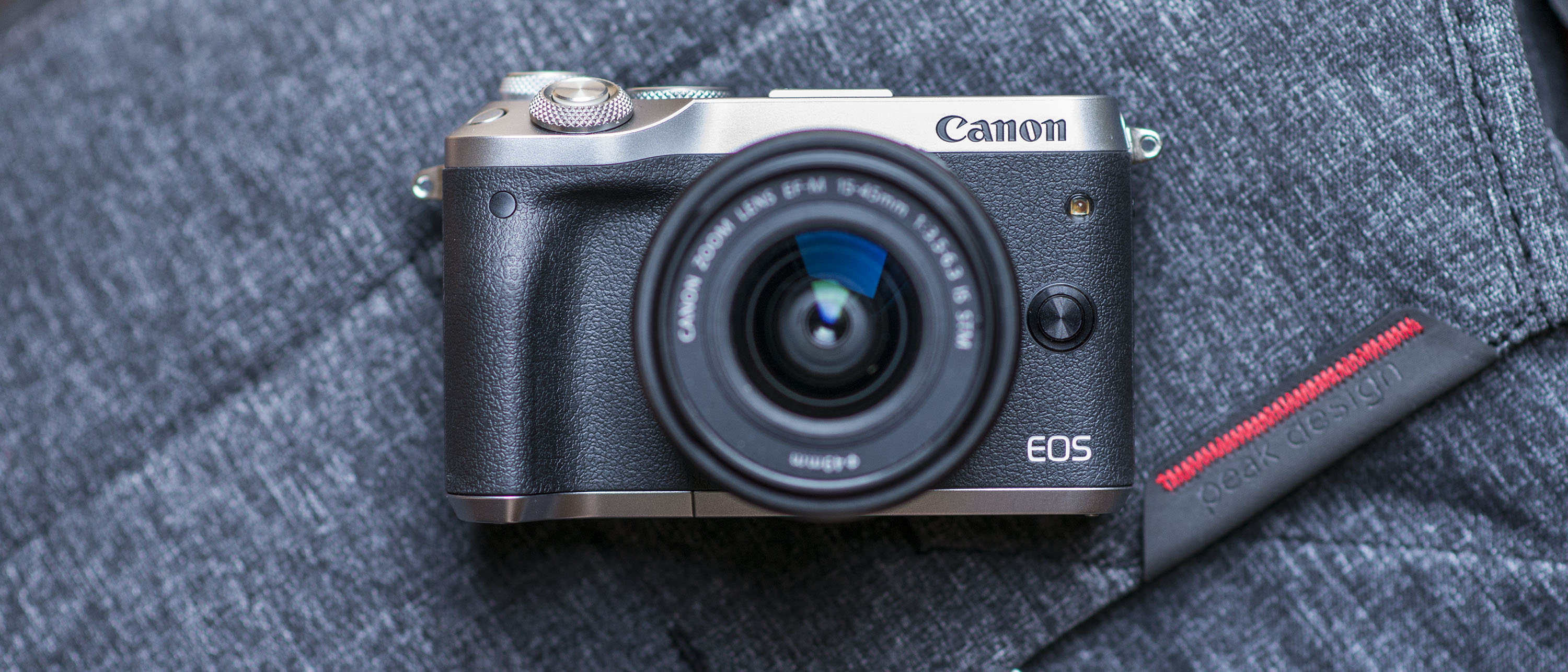Why you can trust TechRadar
Performance
- 7fps burst shooting
- 295-shot battery life
- Wi-Fi, NFC and Bluetooth
There’s only the briefest of delays after you flick the power switch, and if you already have an AF point selected the Canon EOS M6 generally finds focus very quickly. If you tend to leave the camera’s autofocus system on its more automated default option it may take a whisker longer to identify the scene, but it’s certainly still speedy enough for all but the most critical situations.
With a fast memory card the camera manages 18 simultaneous raw+JPEG frames before slowing down, and 28 JPEGs when tested in the same way – perfectly respectable figures for such a model. It takes around six seconds to clear the former and less than two for the latter, and while the camera locks up as this happens – which means you can't enter the menus – this is potentially only an issue in practice if you're using a slower card, which would lengthen these times.

You're able to browse the menus and captured images without any lagging, and even when zooming into images there’s virtually no lag as you use gestures to zoom and swipe around, while if you make use of the freely rotating rear control dial you can zip through a series of images at great speed.
Thanks to the combination of physical controls, the touchscreen and the camera’s general responsiveness, once you get used to the layout of controls and functions you can operate the EOS M6 very fluidly. The fact that you can customize so many of the camera’s controls, and place so much within a custom My Menu, only makes it better.

The EOS M6's LCD screen responds very well to touch, and while some of the virtual controls are on the small side, you’re unlikely to want to control everything via the screen (the main menu, for example). Should you find the screen isn't bright enough outdoors you can easily boost its brightness through the menus, although one strange issue is that the top plate renders some of the screen’s touch controls inaccessible when the screen is flipped through a 180-degree angle.
Another oddity is the lack of a selectable electronic shutter, a feature that’s pretty much standard on such models. Its absence means you can't shoot as discreetly as you can on rival models, as there’s essential no way to silence the M6's mechanical shutter (which is a shame, given the quiet AF performance from the two aforementioned lenses). This also means you can't access shutter speeds faster than the 1/4000 sec limit imposed by the mechanical shutter, although this is arguably less of a concern here, when you consider the lack of wide-aperture lenses in the current EOS M portfolio.
Image quality
- Four metering patterns
- In-camera raw processing
- 5-axis IS during video recording
The Canon EOS M6 offers evaluative, centre-weighted, partial and spot metering options, and left to the default first of those settings it manages to cope well across both balanced and tricky lighting conditions. It’s a good idea to keep the Peripheral Illumination correction option enabled, as this helps to lift the slight darkness that can form around the peripheries of the frame, and the Auto Lighting Optmizer also proves useful in high-contrast situations.

The default Picture Style is Standard, although a comparison with the Auto Picture Style shows the latter to do a much better job of reproducing most colors. Greens and blues in particular appear somewhat undersaturated on the Standard option, so Auto is perhaps a better choice if you’re shooting outdoors, particularly if the scene contains skies and foliage.

The auto white balance system appears to be nice and accurate under both natural and artificial sources, and even when these are mixed, although it can remove some of the warmth of incandescent sources. Many recent cameras feature an option that allows the user to keep white balance on Auto while preserving this warmth, but it's not present here. Still, there is enough control through the various options to allow for all the tweaking you need.

One of the strengths of the Canon EOS M6 is just how much you can do with images post capture. In-camera raw processing allows you to edit files and save them as new JPEGs, and while it would be good to see this functionality fleshed out and expanded, the fact that you can control everything through the touchscreen makes the process very quick and easy. On top of this, options to resize images, adjust their aspect ratio and crop finely means you can achieve a fair bit without needing to go anywhere near a computer.
While the M6’s video capabilities fall short of delivering the same kind of detail and clarity as some rivals, it records perfectly decent Full HD video. The ability to use the touchscreen to shift focus between different parts of the scene is particularly useful, with the Dual Pixel CMOS AF system moving smoothly and discreetly as you do this.
Current page: Performance and image quality
Prev Page Build, handling and AF Next Page Verdict and competition